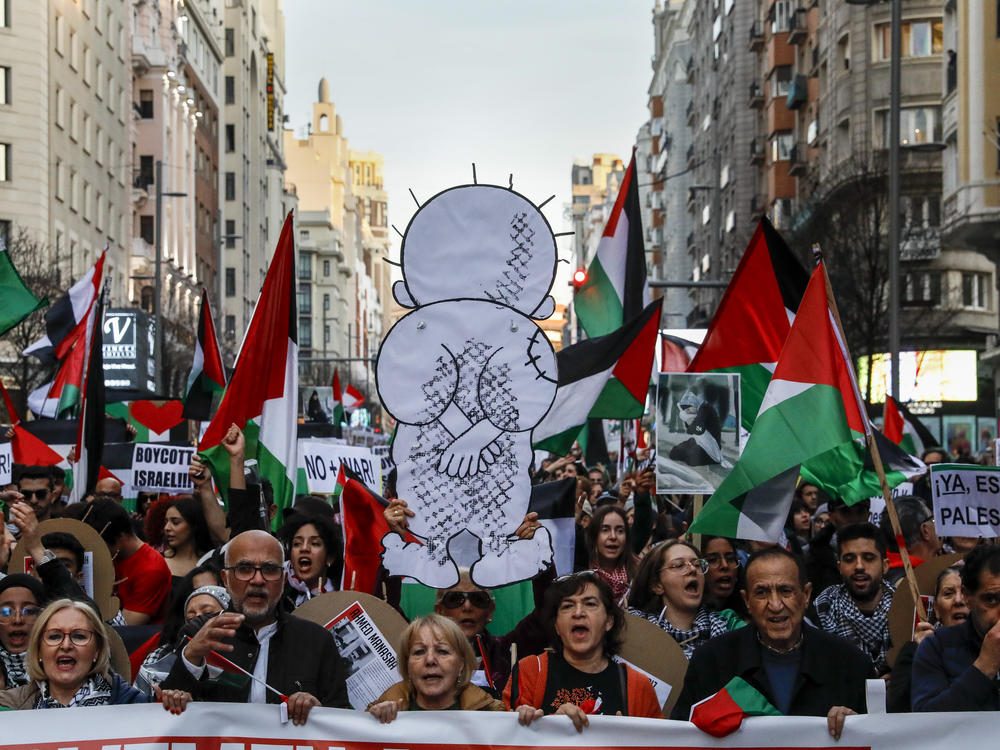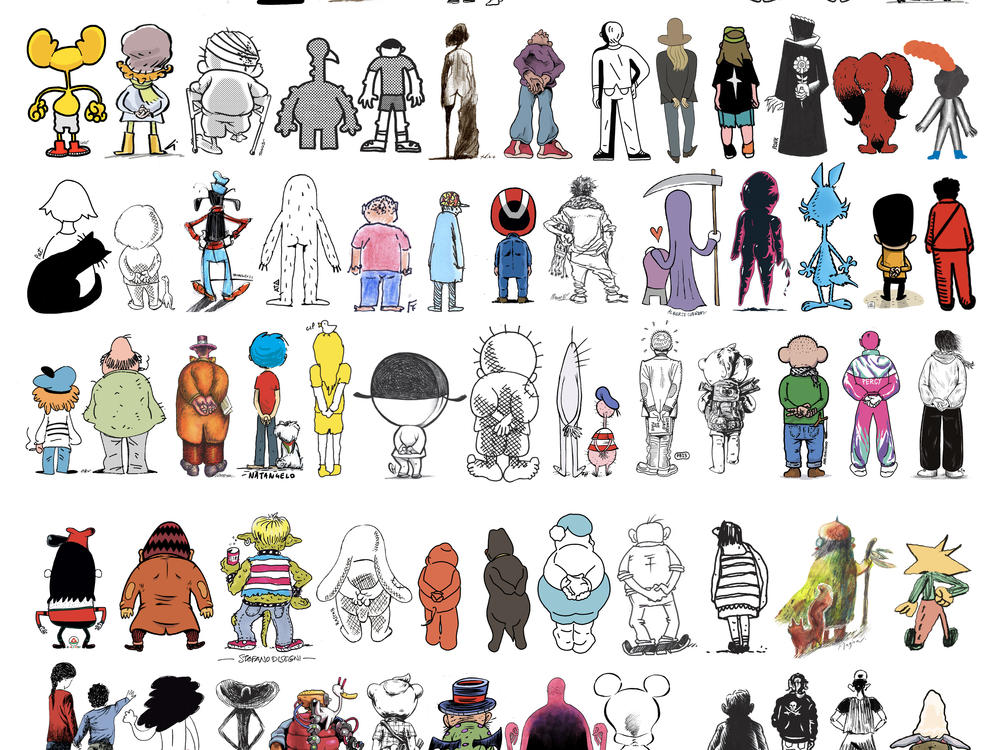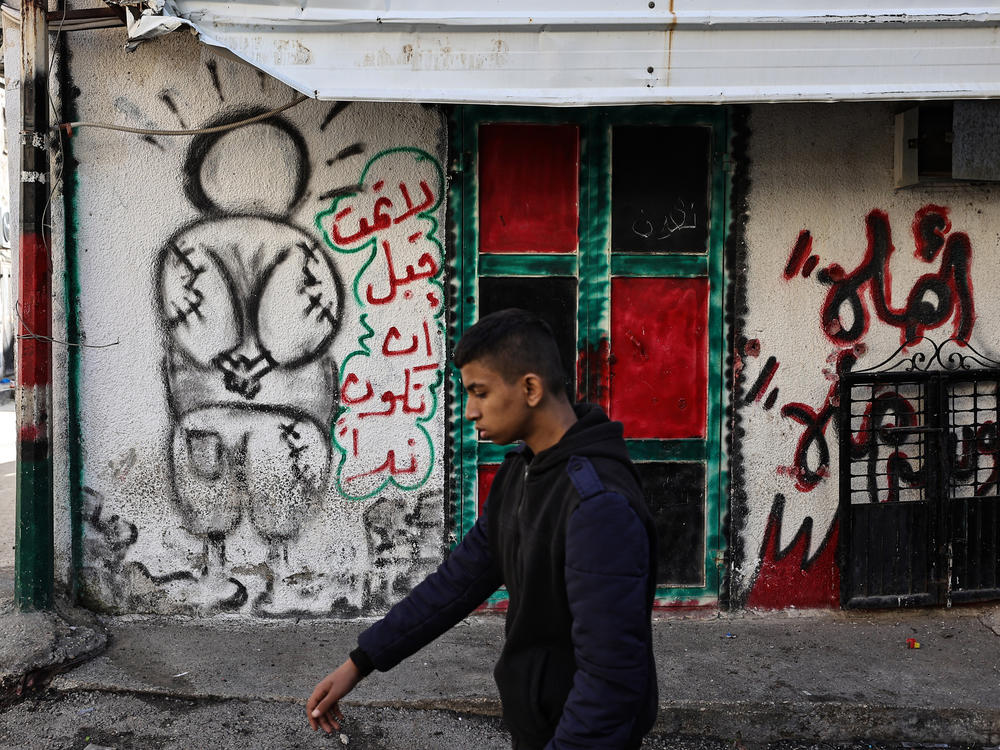Section Branding
Header Content
Who is Handala, the barefoot, spiky-haired boy who symbolizes Palestinian resistance?
Primary Content
RAMALLAH, West Bank — His hair is like a hedgehog, his feet are bare, his clothes are rags and his back is to the world always. His name is Handala.
A character created by Palestinian newspaper cartoonist Naji al-Ali in 1969 — two years after the 1967 Arab-Israeli war — the boy known as Handala is a symbol of the Palestinian struggle and resistance to occupation to this day.
As the Israel-Hamas war rages on in Gaza, there has been renewed interest in Handala and what he represents. For instance, a group of artists in Italy recently banded together to create a poster that pays tribute to Handala.
An Italian publishing house asked artists to send in their work — with one rule: All the figures had to be drawn with their backs to the reader, like Handala.
With the 80 submissions it received, the publishing house created a poster that is available online and has been circulating widely on social media over the past few months. There is a monster, a mouse and a two-headed person, all with their backs to the reader.
In solidarity, a group of artists in Japan created its own poster.
Here's a history of who Handala and his creator are.
Who is Handala?
Handala is forever 10 years old — the age that Ali was when his family was forced to move during the mass displacement of Palestinians in 1948 when the state of Israel was formed. Palestinians and their supporters refer to that displacement as the Nakba, or Arabic for "catastrophe."
Ali's refugee boy character shares his name with a resilient, bitter plant that grows in the Middle East called handal. It has deep roots and will always grow back even if it's weeded out.
"This character represents insurgency, refusal and struggle," says Egyptian columnist Nadi Hafez of al-Qabas newspaper, where Ali worked for a long time. "And it satirizes the politics around the Palestinian cause, or the politics of the Arab world, or indeed international politics when it comes to the Palestinian cause."
Handala didn't turn his back to the reader until 1973, after the Yom Kippur War, when a coalition of Arab countries led by Egypt and Syria fought Israel in October of that year. At the time, there was a push by countries including the U.S. for a settlement of the conflict. By turning Handala's back to the world, Ali was expressing his rejection of solutions from foreign nations imposed on Palestinians.
"The overpowering image is Handala silently watching things going on," says cartoonist and journalist Joe Sacco, author of the graphic novel Palestine. "He is silent, but he is observing, and it is clear to the reader that he is knowing, he knows what's going on. He knows there is hypocrisy."
During times of upheaval between Israel and Palestinians, Ali sometimes showed Handala engaged in activities that signify resistance, like throwing rocks, although there has been criticism of the way he depicted Israeli soldiers.
"The rights of resistance are understood, and when that is expressed through Handala, I think that is just a sign of incredible frustration about diplomacy, peace talks that generally lead nowhere," Sacco says.
Who was Naji al-Ali, Handala's creator?
Born in 1938 in the Palestinian village of al-Shajara in Galilee in what is now northern Israel, Naji al-Ali drew more than 40,000 cartoons during his career and was equally critical of Israeli and Arab governments.
Ali was a pan-Arab nationalist and was jailed many times for his anti-government activism.
He spent much of his career in Kuwait, where he worked for al-Seyassah newspaper and then at al-Qabas newspaper.
Ali was killed in 1987, shot by unknown assailants outside al-Qabas' office in London.
London's Metropolitan Police reopened the case in 2017, but the murder remains unsolved.
Why Handala continues to be relevant
Handala's image is popular in street art and graffiti, especially on the Israeli-built barrier that separates Israel from the West Bank.
"Handala was the perfect embodiment of dispossession," Sacco says. "Handala became the symbol for the poor and all those [ordinary] Arabs who were being shafted by their own elite, and by the West, and by Israel."
Hafez, the Egyptian columnist who knew Ali, says that Handala remains important in this moment during the war.
"Handala is the character that the artist Naji al-Ali has made immortal in the human consciousness," he says.



